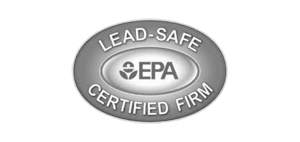Water damage can be a homeowner’s worst nightmare. When water infiltrates your living space, it can wreak havoc on your belongings and the structure of your home. Understanding the potential consequences of water damage is crucial in order to protect your precious items and minimize the financial and emotional impact it can have.
In this section, we will explore the impact of water damage on various items and structures within your home. From furniture and upholstery to electronic devices and appliances, we will delve into the potential damage caused by water intrusion and provide practical tips on how to safeguard your belongings. Additionally, we will discuss the consequences of water damage to the structural integrity of your home and the importance of taking immediate action to prevent further deterioration.
By gaining insight into the consequences of water damage, you can empower yourself to take proactive measures that will not only protect your belongings but also ensure the long-term safety and condition of your property.
Key Takeaways:
- Water damage can ruin various items and structures within your home.
- Furniture, upholstery, electronic devices, and appliances are particularly vulnerable to water damage.
- Taking immediate action is essential to minimizing the impact of water damage.
- Preventive measures can help safeguard your belongings and ensure the long-term integrity of your property.
- Seeking professional assistance is crucial for effectively addressing water damage and preventing further deterioration.
Water Damage to Furniture and Upholstery
Water damage can have disastrous effects on your furniture and upholstery. When exposed to excess moisture, these items can suffer from various forms of damage, including structural deterioration, discoloration, mold growth, and unpleasant odors. It is essential to understand the potential risks and take immediate action to minimize the damage.
Furniture damage: Waterlogged furniture can warp, crack, or break, compromising its structural integrity. Wood furniture is especially vulnerable to water damage, as the moisture can cause swelling and distortion. Upholstered furniture, such as sofas and chairs, can become stained, develop mold, and emit unpleasant odors.
Upholstery damage: Water can seep into upholstery fabrics, causing discoloration, fading, and degradation. If not addressed promptly, this can lead to permanent damage, requiring expensive reupholstering or replacement. Moreover, upholstery that remains damp for an extended period can create an ideal breeding ground for mold and mildew.
To minimize furniture and upholstery damage from water, follow these tips:
- Act quickly: Remove the furniture from the wet area as soon as possible to prevent further moisture absorption
- Dry thoroughly: Wipe off excess moisture and use fans or dehumidifiers to promote faster drying
- Remove upholstery covers: If removable, take off the covers and wash or dry clean them according to the manufacturer’s instructions
- Blot stains: Gently dab stained areas with a clean cloth or paper towel to absorb excess moisture
- Air out cushions: If cushions are removable, prop them up in a well-ventilated area to dry
- Inspect for mold: Check for any signs of mold growth and address it promptly by using appropriate cleaning solutions or consulting professionals
- Consider professional restoration: If the damage is severe or extensive, seek assistance from professional furniture restoration experts
| Damage | Causes | Prevention |
|---|---|---|
| Structural deterioration | Exposure to prolonged moisture | Avoid placing furniture in areas prone to water leaks or flooding |
| Discoloration | Water absorption by upholstery fabric | Protect furniture from direct contact with water sources |
| Mold growth | Prolonged moisture and insufficient ventilation | Maintain proper indoor humidity levels and ensure adequate ventilation |
| Unpleasant odors | Moisture retention within furniture and upholstery | Avoid storing wet or damp items near furniture |
Damage to Electronic Devices and Appliances
When water infiltrates your home, it poses a significant threat to your electronic devices and appliances. The aftermath of water damage on these valuable items can be devastating. From waterlogged devices to ruined appliances, the consequences can be both costly and inconvenient.
Water damage can cause electronic devices such as smartphones, laptops, and tablets to malfunction or even become completely inoperable. Exposure to water can short-circuit internal components, leading to irreversible damage. Additionally, waterlogged devices may suffer from corrosion, further compromising their functionality.
Appliances, such as refrigerators, washing machines, and dishwashers, are also susceptible to water damage. Water can seep into the electrical components of these appliances, causing mechanical failures and rendering them unusable. The cost of repairing or replacing these water-logged appliances can add up quickly.
However, there are steps you can take to mitigate the damage and protect your electronics and appliances from water damage:
- Keep electronics elevated: Place electronic devices on higher surfaces or shelves to minimize the risk of water damage in case of a water-related incident.
- Use waterproof cases: Invest in waterproof cases for your smartphones, tablets, and other portable devices to provide an added layer of protection.
- Unplug and dry: In the event of water damage, immediately unplug affected appliances from power sources and allow them to completely dry before attempting to use or repair them.
- Consider surge protectors: Use surge protectors with built-in protection against water damage to safeguard your electronics from power surges caused by water-related incidents.
- Regular maintenance: Follow manufacturer guidelines for regular maintenance of your appliances to ensure they are in good working condition and less prone to water damage.
By following these precautions, you can minimize the risk of water damage to your electronic devices and appliances, protecting your investments and avoiding the inconvenience of replacing or repairing water-damaged items.
| Issue | Consequence |
|---|---|
| Short-circuits in electronic devices | Malfunction or complete breakdown of the device |
| Corrosion in waterlogged devices | Deterioration of internal components and reduced functionality |
| Electrical failures in appliances | Inability to use the appliance and the need for repair or replacement |
| Mechanical issues in appliances | Compromised performance and potential safety hazards |
Structural Damage and its Consequences
Water damage poses a grave threat to the structural integrity of your home. When water infiltrates your property, it can compromise the foundation, walls, floors, and other vital components. The consequences of this structural deterioration can be extensive, leading to costly repairs and diminished safety.
One of the most severe repercussions of water damage is the compromised foundation. Excessive water can weaken the foundation and compromise its stability, creating cracks and shifting the structure. This can lead to settling, sinking, or even collapse in severe cases. It is crucial to address water damage promptly to prevent further deterioration and safeguard the foundation of your home.
The walls and floors are also vulnerable to water damage. Moisture from leaks or flooding can seep into the walls, causing them to weaken or develop mold and mildew. This not only compromises their structural integrity but can also affect the indoor air quality, posing health risks to you and your family. Similarly, waterlogged floors can warp or decay, requiring extensive repairs or replacement.
Moreover, other vital components such as the roof, beams, and support structures can also suffer significant damage from water infiltration. Prolonged exposure to moisture can lead to rotting, rusting, or decay, compromising their strength and stability. It is crucial to address water damage promptly and take preventive measures to avoid further structural deterioration.
Preventing water damage to your home’s infrastructure is essential to maintain its long-term integrity. Regular inspections, maintenance of gutters and downspouts, proper drainage systems, and sealing any cracks or gaps can help minimize the risk of water infiltration. Additionally, installing a reliable sump pump and maintaining proper ventilation can further protect your home from potential water damage.
By taking prompt action and implementing preventive measures, you can mitigate the consequences of water damage to your home’s infrastructure. Remember, addressing water damage promptly not only preserves the structural integrity of your property but also helps protect your investment and ensure the safety of your loved ones.
Conclusion
Water damage poses a significant risk to homeowners, as it can destroy a wide range of items and structures within your home. From furniture and upholstery to electronic devices and appliances, the potential consequences are vast.
To protect your belongings and ensure the long-term integrity of your property, it is crucial to understand the impact of water damage and implement preventive measures. Staying vigilant and addressing water damage promptly are key steps in minimizing the detrimental effects of such incidents.
If water damage does occur, seeking professional assistance is essential. Experts can assess the extent of the damage, provide guidance on salvaging items, and undertake necessary repairs to mitigate further deterioration. Remember, prompt action is critical in preventing costly restoration and preserving your home’s structural integrity.
By being proactive in preventing water damage and taking immediate action when it occurs, you can safeguard your home and belongings from the devastating consequences of water infiltration. Preserve the value and livability of your property by prioritizing water damage prevention and mitigation.
FAQ
What are the common items that get ruined by water damage?
Water damage can ruin various items and structures within your home, including furniture, upholstery, electronic devices, appliances, flooring, walls, and even the foundation.
How can I protect my furniture and upholstery from water damage?
To protect your furniture and upholstery from water damage, you can consider using waterproof covers, raising furniture off the ground, avoiding placing furniture near windows or areas prone to leaks, and promptly addressing any water leaks or spills.
What should I do if my electronic devices or appliances get water damaged?
If your electronic devices or appliances get water damaged, you should immediately turn them off and unplug them from power sources. Remove any batteries if applicable. Then, dry them thoroughly, either by using a towel or an air-drying method, and seek professional assistance if necessary.
How does water damage affect the structural integrity of a home?
Water damage can compromise the structural integrity of a home by causing deterioration of the foundation, walls, floors, and other vital components. It can lead to mold growth, wood rot, and weakened structures, posing potential safety hazards and requiring costly repairs.
What should I do to minimize the impact of water damage on my property?
To minimize the impact of water damage, it is crucial to address any leaks or water intrusion promptly. Regularly inspect and maintain your home’s plumbing system, roof, and gutters. Install proper drainage systems and consider using water leak detection devices. It is also advisable to have a professional water damage restoration company on standby for emergencies.









